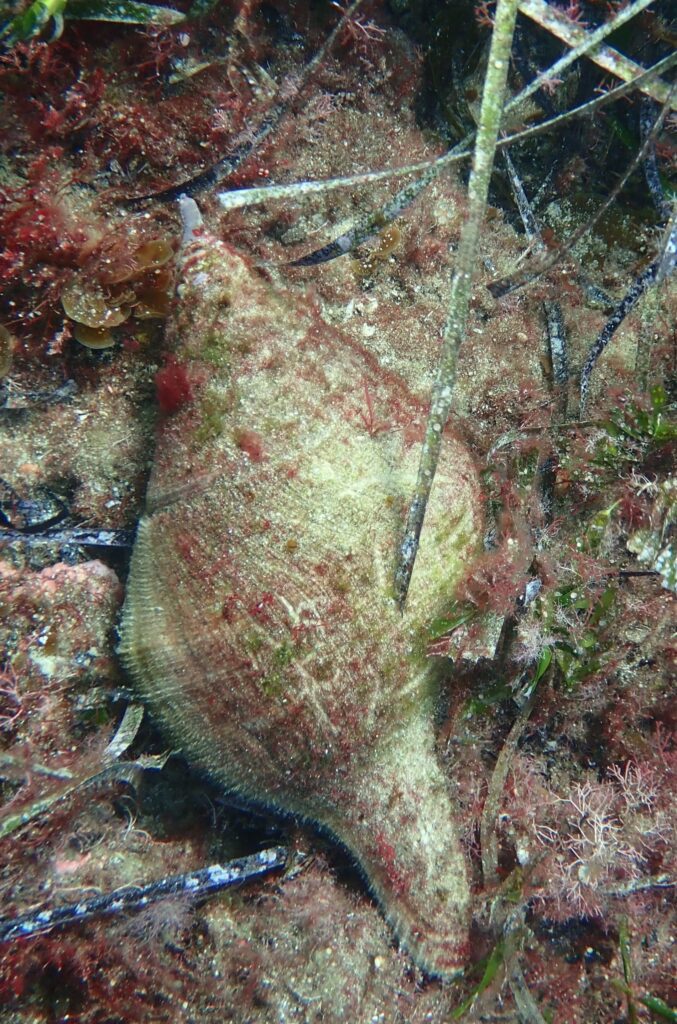Triton Shell
Cymatium parthenopeum
Tritons belong to the family Ranellidae, a group of small to large predatory marine gastropod molluscs. They have a long siphonal canal and the shell is covered with a thick brown, hairy covering, known as the periostracum, when alive. The triton lays down a thick outer lip between growth spurts, with previous outer lips appearing as strong ridges. Distinctive alternating black and white markings surround the aperture, and the foot of the living animal has an intricate pattern of round brown spots upon a cream background.
Unlike many gastropod species, the triton have separate sexes and undergo sexual reproduction with internal fertilisation. Females then lay eggs in capsules in masses attached to underwater surfaces. The larvae then emerge as free-swimming larvae and spend up to nine months floating in the plankton, thus dispersing vast distances. This is among the longest larval duration and dispersal distance of any marine invertebrate.
Adult tritons are active predators and feed on bivalves, ascidians and barnacles. They inhabit intertidal zones on rocky and muddy shores, on exposed reefs and in estuaries to depths of 150 metres. They occur in commercial oyster beds where they are considered a pest. Tritons range in temperate and tropical seas from Jurien Bay, WA to Cape Flattery, Qld, including Tasmania. They grow to a maximum height of 15 centimetres.
This species is related to the giant triton, which is protected on the Great Barrier Reef, Queensland, as it’s one of the only naturally occurring predators of the Crown-of-Thorns Starfish.
Other common names include: Neopolitan triton, hairy trumpet triton, hairy whelk, Australian brown hairy triton
Occurrence at the Busselton Jetty:
The triton shell is often observed nestled amongst the colourful invertebrate life on the jetty piles, though may be difficult to see as their shells are generally obscured by coralline algae.
Image by: S. Teede
